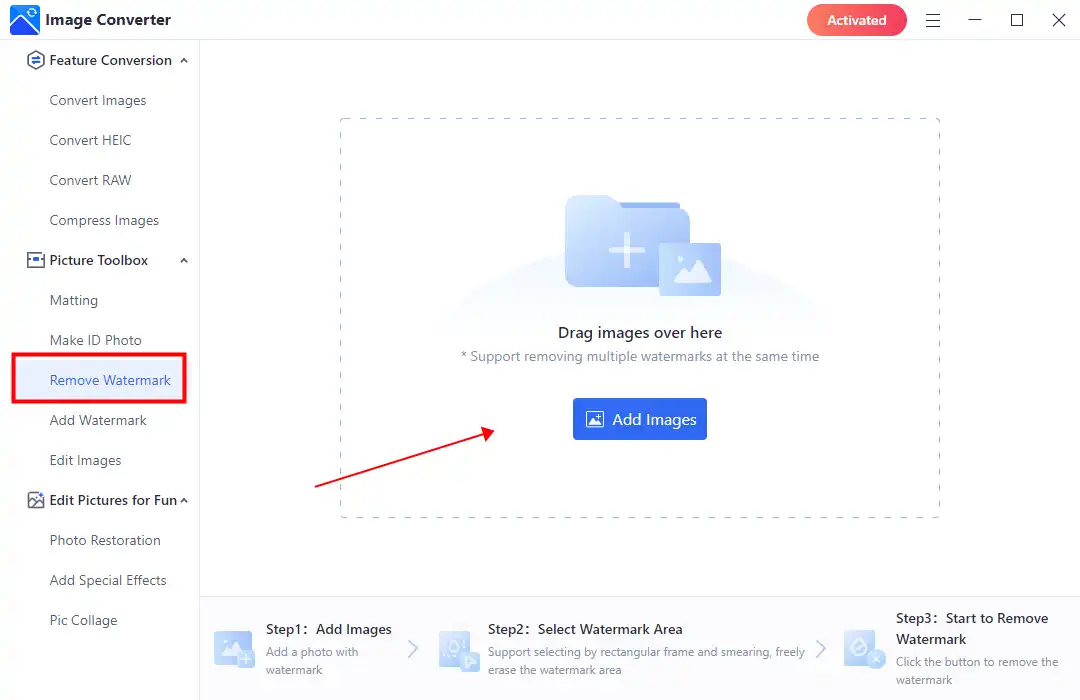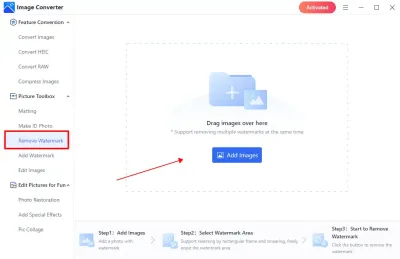If you’ve ever downloaded an image from Shutterstock and found that it still has their logo or watermark on it, you’re not alone. Many users want clean, professional-looking images for their projects, but licensing restrictions or oversight can leave logos lingering. Removing these logos might seem tricky or even risky, but understanding the process and the policies behind them can help you make informed decisions. In this guide, we’ll explore how to approach removing Shutterstock logos properly and what you need to know about licensing to stay compliant while getting the images you want.
Understanding Shutterstock Logo Usage and Licensing Policies

Before diving into how to remove Shutterstock logos, it’s crucial to understand the company’s licensing rules. Shutterstock offers various licensing options—standard and enhanced—that specify how you can use their images. Typically, when you purchase an image, you’re granted a license to use it without the watermark or logo, but only under certain conditions.
Key points about Shutterstock licensing:
- Watermarked images are meant for preview purposes only. They are not licensed for final use.
- Licensed images are free of watermarks and logos, provided you’ve purchased the appropriate license.
- Removing a watermark or logo from an image without proper licensing is considered copyright infringement and can lead to legal issues.
- Sometimes, users download watermarked images accidentally or before completing the licensing process. In those cases, purchasing the correct license will provide you with a clean, logo-free version.
Important: Attempting to remove logos or watermarks from images you haven’t licensed properly is both unethical and illegal. Instead, always ensure you’ve obtained the correct license to access the unwatermarked, logo-free image. If you already own a license, the clean image should be available through your Shutterstock account or via the download link provided after purchase.
In summary, understanding Shutterstock‘s licensing policies helps you use images responsibly and legally. If you’re unsure whether you have a licensed, watermark-free version, check your account or contact Shutterstock support. Remember, respecting copyright laws not only keeps you compliant but also supports creators and the platform.
Methods to Remove Shutterstock Logos from Images

So, you’ve come across a great image on Shutterstock, but unfortunately, it has that pesky Shutterstock logo stamped across it. Maybe you want to use it for a project, presentation, or just personal use, and the logo is getting in the way. Don’t worry—there are several methods to remove that watermark or logo, but keep in mind that each comes with its own set of challenges and considerations.
1. Using Photo Editing Software
One of the most straightforward ways is to use professional photo editing tools like Adobe Photoshop, GIMP, or Pixelmator. Here’s a quick rundown:
- Clone Stamp Tool: This tool allows you to sample pixels from one part of the image and paint over the logo. It works well for simple backgrounds but might require patience for complex images.
- Healing Brush Tool: Similar to the clone stamp, but it automatically blends the sampled pixels with the surrounding area, making it look more natural.
- Content-Aware Fill: Available in Photoshop, this feature analyzes the surrounding pixels and intelligently fills in the selected area, often producing impressive results.
While effective, these methods require some skill and time. The key is to carefully select the right tools and work slowly to avoid creating obvious edits.
2. Using Online Logo Removal Tools
If you’re looking for a quicker, no-software solution, there are online tools designed specifically for removing watermarks or logos. Some popular options include Inpaint, Fotor, or Pixlr’s healing tools. Here’s how they generally work:
- Upload the image.
- Use the brush or selection tool to mark the logo or watermark area.
- Let the tool process and remove the marked area.
- Download the edited image.
Keep in mind that the quality of results varies, especially with complex backgrounds. Sometimes, these tools may leave traces or blur parts of the image, so a bit of manual touch-up might still be necessary.
3. Cropping or Reframing
If the logo appears in a corner or edge of the image, another simple method is to crop it out. This is often the easiest and fastest solution, especially if cropping doesn’t compromise the composition of your image. Just make sure the cropped area doesn’t cut out important parts of the subject.
4. Hiring a Professional
If you’re dealing with a complex image or need a high-quality result, consider hiring a professional graphic designer or retoucher. They can seamlessly remove the logo with advanced techniques, ensuring the final image looks flawless. It’s worth the investment if the image is crucial to your project.
Remember, while these methods can be effective, they’re not foolproof. The success often depends on the image’s complexity, your skill level, and the tools you use. And most importantly—be mindful of the legal and ethical considerations when editing copyrighted images.
Legal Considerations When Removing Logos from Shutterstock Images
Before you get too excited about removing logos or watermarks from Shutterstock images, it’s crucial to understand the legal landscape. Shutterstock, like most stock image providers, owns the rights to their images, and the watermarks are there for a reason—they indicate that the image is protected and licensed.
Why You Shouldn’t Remove Logos Without Proper Licensing
- Copyright Infringement: Removing a Shutterstock logo from an image and using it without purchasing the appropriate license can be considered copyright infringement. This could lead to legal action, fines, or other consequences.
- License Agreements: When you buy or license an image from Shutterstock, you’re agreeing to specific terms of use. These typically include restrictions against removing watermarks or using unlicensed images.
- Ethical Considerations: Respect for creators and copyright laws isn’t just about avoiding legal trouble—it’s about supporting artists and photographers who work hard to produce quality content.
What About Fair Use?
In some rare cases, you might think fair use applies—like for commentary, criticism, or educational purposes. However, simply removing a logo doesn’t automatically qualify as fair use. Fair use is a complex legal concept that depends on multiple factors, including purpose, nature of use, amount used, and effect on the market.
Best Practices
- Purchase Proper Licensing: Always buy the correct license for your intended use. Shutterstock offers a variety of licenses—standard, enhanced, etc.—tailored to different needs.
- Use Licensed Images as Intended: Follow the terms outlined in your license agreement. If it says no modification or watermark removal, respect that.
- Consult Legal Advice: If you’re unsure about what’s permissible, especially for commercial projects, it’s best to consult a legal professional familiar with copyright law.
In summary, removing the Shutterstock logo without proper licensing is not just unethical but can also have serious legal repercussions. Always ensure you have the right permissions before editing or using images in a way that might infringe on copyright.
Best Practices to Avoid Logo Removal Issues
Dealing with Shutterstock logos on images can be a bit tricky, especially if you want to keep your edits clean and professional. To avoid running into issues when removing or working around these logos, it’s best to follow some solid best practices. Think of these as your go-to guidelines for a smooth experience!
First and foremost, always respect licensing agreements and copyright laws. Shutterstock logos are there for a reason—they mark the image as licensed content. Attempting to remove or alter these logos without proper rights can lead to legal trouble. So, if you’re planning to use images commercially, make sure you have the appropriate license or consider purchasing a version without watermarks or logos.
Another tip is to work with high-resolution images whenever possible. Higher resolution images give you more flexibility when editing, allowing you to carefully clone or patch areas around the logo without sacrificing image quality.
When it comes to the actual removal process, use the right tools and techniques. Photo editing software like Adobe Photoshop or GIMP offers powerful features such as the Clone Stamp, Healing Brush, and Content-Aware Fill. These tools help you blend the area where the logo used to be seamlessly with the surrounding pixels.
- Always work on a duplicate layer to preserve the original image. This way, you can revert back if needed.
- Zoom in for precision—careful work at high zoom levels yields better results.
- Use feathering and blending techniques to make the edits look natural and avoid obvious patches.
Lastly, consider the context of the image. Simplistic backgrounds are easier to work with, while complex scenes might need more advanced editing skills or even professional help. Remember, patience is key—rushing the process can lead to unnatural-looking edits that might stand out.
In summary, follow licensing rules, work with high-res images, use the right tools, and take your time. These best practices will help you navigate logo removal smoothly and ethically, maintaining the integrity of your visuals.
Conclusion and Final Tips for Handling Shutterstock Logos in Your Images
Dealing with Shutterstock logos can feel like walking a tightrope—on one hand, you want to get the most out of your images, and on the other, you need to respect copyright and licensing restrictions. But don’t worry! With the right approach, you can handle logos effectively and ethically.
To wrap things up, here are some final tips to keep in mind:
- Always check your licensing options: If you frequently need images without logos, consider purchasing or subscribing to plans that include logo-free versions.
- Use professional editing tools: Photoshop, GIMP, or other advanced editors give you the best chance at seamless removal.
- Practice patience and precision: Rushing can lead to unnatural results. Take your time to blend and clone carefully.
- Respect intellectual property: Never remove logos with the intent to misrepresent or infringe on copyright. Always aim for ethical use.
- Explore alternative solutions: Sometimes, it’s easier to find similar images without logos or to purchase the original, logo-free images directly from Shutterstock.
Remember, while removing logos might seem straightforward, it’s important to do so responsibly. If you’re ever unsure, consulting with a professional graphic designer or legal advisor can save you headaches down the line.
Ultimately, the goal is to create stunning visuals that respect the rights of content creators while meeting your needs. With patience, practice, and proper licensing, you can handle Shutterstock logos confidently and ethically. Happy editing!


